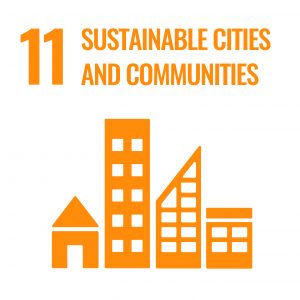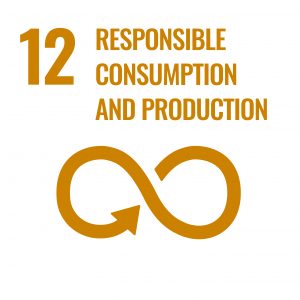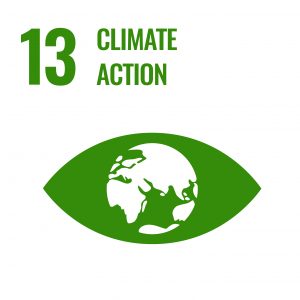Fashion and sustainability can be a controversial combination. The push for sustainability is stronger than ever, especially in the fashion industry. As the public increasingly sees fashion’s obsession with seasonal trends as problematic — and revamping wardrobes every year as dangerously out of touch — the industry is changing, too. The move toward ethical practices is shaping everything from production to retail marketing.
We’ll explore what the future of fashion and sustainability will look like and what fashion brands must do to stay at the top of their market.

Moving Away From Fast Fashion
One of the most widely recognised issues in the fashion industry is the prevalence of throwaway culture. Shoppers are accustomed to buying new clothes for every new year, school year, holiday, and more — and simply tossing their clothes when they go out of style. This culture is fuelled by fast fashion, a practice that uses low-quality materials and chemicals to keep prices low, which ultimately leads to faster waste build-up and destructive emission levels.
As we move into the future of fashion and sustainability, consumers and companies will both move toward long-term styles like baggy jeans and crop tops, which have more longevity — or, at least, have historically bounced back after going out of style. Evergreen clothes, including basics like little black dresses and plain white tees, may also see consistent demand. As sustainable fashion rises, designers and brands must increasingly brainstorm ways to create clothes that last longer and won’t be left to rot in a landfill.
Increasing Transparency
Transparency will be a big driver of sustainability in the fashion industry. As leading companies begin offering more insight into their production processes — and ethics-minded consumers seek more information before they buy — other brands will follow suit.
Since fast fashion practices are largely viewed negatively, this will naturally require brands to make green shifts in their production processes. For instance, the fashion industry may see more jewelry brands finding ethical sources for minerals and precious metals, instead of using unethical mining practices and cheap labor. Fashion companies may consider how green their day-to-day operations are by looking into sustainable website hosts and energy suppliers.
The growth of transparency will be key to eliminating greenwashing, which occurs when fashion brands promote themselves as eco-conscious without increasing their efforts to go green.
Building Sustainable Shipping Processes
Online shopping is growing as fast as (if not faster than) the demand for sustainable fashion. Unfortunately, shipping can be a major contributor to the industry’s negative environmental impact. The delivery process — which may require the use of trucks, airplanes, and other fuel-heavy modes of transportation — can lead to plenty of carbon emissions, especially as demand for ultra-fast shipping rises. Plus, today’s packaging is often wasteful.
To build the sustainable future of fashion, companies have to put more eco-friendly processes into place. Choosing recyclable or reusable shipping materials — as well as minimizing the use of fillers like packing peanuts and bubble wrap — is a great start. If companies are unable to make an immediate shift to sustainable packing materials, which are often more costly, they can allow consumers to opt for greener options for a smaller cost, similarly to how grocery stores allow customers to donate by rounding up their total.
However, companies can encourage consumers to choose standard shipping options (rather than demanding rush shipping) by noting the environmental impact of these options right on their site.
Changing the Consumer Mindset
While ethical fashion brands can make sustainable products more readily available, the growth of sustainability in the industry depends on equally growing consumer demand. While ethical consumers are a rising voice, there’s still a large number of consumers who seek clothing at low price points that are only possible when mass manufacturing processes are in use.
Since sustainable fashion is often costly to produce, some consumers may simply turn to more affordable brands when prices rise. The sustainable future of fashion depends on the ability of clothing brands and thrift stores to educate consumers — especially their current customers — about why ethical brands are worth supporting, or why secondhand is ideal when price is a priority. Fashion brands can also encourage customers to view their products as long-term investments, rather than pieces that they’ll soon discard.
As fashion companies move toward sustainability, we may see them working alongside consumers and influencers to turn ethical practices into a permanent consumer expectation instead of a long-term trend.
Join Fashion Revolution Week happening 18th-24th April 2022.
Get Involved
Sustainability is the Future of Fashion
Sustainability will undoubtedly be part of the future of fashion. With fast fashion quickly going out of style, brands and consumers are moving toward evergreen styles and ethical suppliers, as well as sustainable shipping processes. As part of this shift, clothing may become more high-quality, allowing throwaway culture to subside.
Consumer demand will also be a big factor in the widespread, long-term rise of ethical practices. Green fashion brands can play a role in boosting this demand for sustainability by educating shoppers about the power of their purchase decisions.

You might also enjoy reading: Fashion and Sustainability
This book examines how sustainability has the potential to transform both the fashion system and the innovators who work within it. Sustainability is arguably the defining theme of the twenty-first century. The issues in fashion are broad-ranging and include labour abuses, toxic chemicals use and conspicuous consumption, giving rise to an undeniable tension between fashion and sustainability.
Shop
Photography by Mukuko Studio




